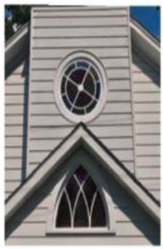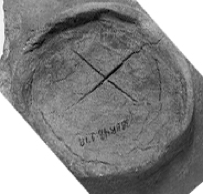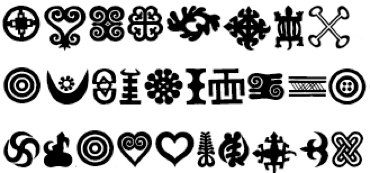Quincunx Across Cultures
The quincunx that appeared in Banneker's dream journal, originating from Senegal, may be the source of similar religious symbols associated with enslaved Africans and their descendants. About 70 miles from Banneker's house, the Wye plantation is today famous as the site where Frederick Douglass was enslaved as a child. Archaeologists found that a similar X-shape had been carved or impressed into several artifacts from the enslaved population.

Forced to leave all their possessions behind in Africa, many of the enslaved left their imprint on local artifacts. This canning lid, found buried in the Wye plantation slave quarters, had diagonal lines added after it was manufactured.

Just 3 miles from the Wye plantation, the African Methodist Episcopal Church, founded by the enslaved population, features a quincunx design in its top window.

The African areas where the quincunx is most common, from Senegal to Liberia, were sometimes called “The Rice Coast”. Their slave trade focused on places like South Carolina where rice growing knowledge was in demand.

In South Carolina plantations where the enslaved made pottery, an X-shape sometimes appears on the bottom of bowls or pots.

The quincunx design also traveled within Africa along trade routes. In Ghana, where gold was so plentiful that it could be exchanged for salt, trade crossroads brought together the symbols of many African cultures in a practice called “Adinkra”. Can you find the Adinkra quincunx? Click on it in the images to the left.
